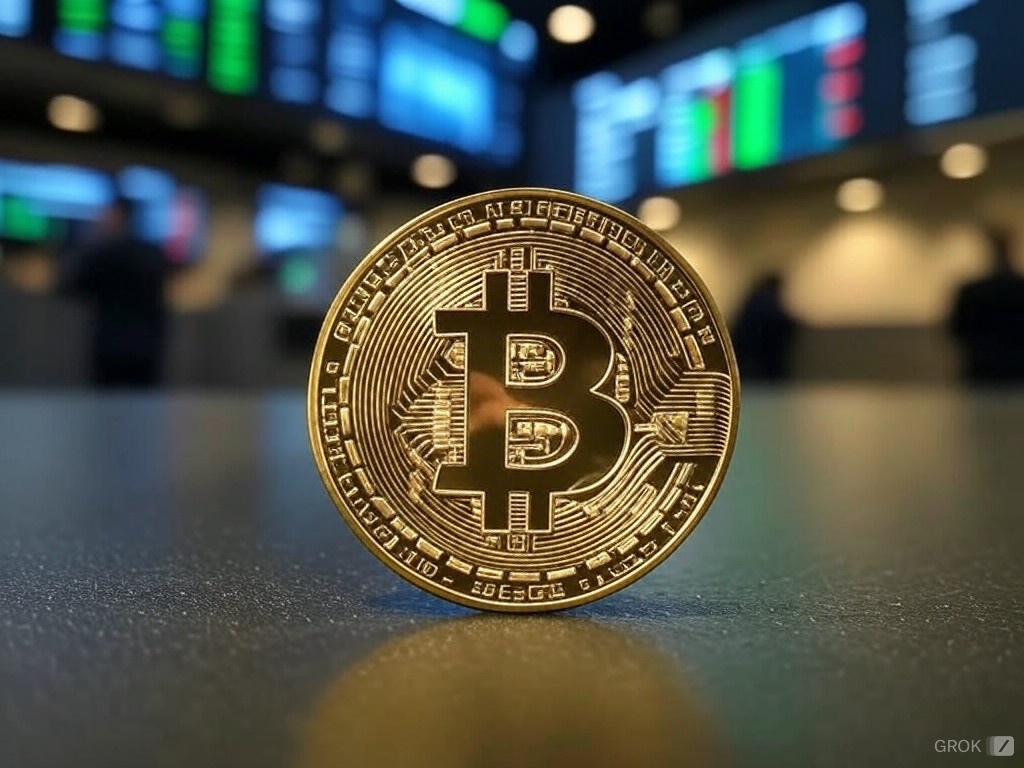Capriole Investments analyzes risks from technical and fundamental analysis.
Despite these risks, “a phenomenal year” for bitcoin seems more likely.
Bitcoin (BTC) is entering the first days of 2025 with bullish prospects, thanks to growing institutional demand and government interest in this digital asset.
This last trend accelerated with the victory of Donald Trump in the United States elections and his promise to create a strategic bitcoin reserve in that country.
Furthermore, throughout its history, the first quarter of the year has been favorable for the currency created by Satoshi Nakamoto. According to Coinglass explorer data, the average yield is 56%which reinforces positive expectations for the asset.

Another issue to highlight is that BTC goes through the months after the halving, the event that reduces the issuance of the asset by half and which occurs every four years. Historically, The peak of each Bitcoin bull cycle has occurred in the year following its halving.
However, and in the midst of this optimistic outlook, it is worth considering: What are the biggest risks for bitcoin in 2025?
In its most recent report Capriole Investmentsan investment firm, notes: “If anything can derail the best year of the bitcoin cycle in 2025, it is likely to be a macroeconomic risk factor and an associated risk-averse movement in stocks.”
For Charles Edwards, co-founder of the firm, It will be essential for BTC to maintain firm support at the $98,000 level because “things could get ugly” if it is lost.

As explained in the Cryptopedia, educational section of CriptoNoticias, the term support is used in technical analysis of financial markets to define a type of floor with which the price of the asset stabilizes or rebounds.
As seen in the following graph, BTC lost that level in mid-December and fell from $98,000 to $91,000. Although later It recovered but still has not managed to stabilize above $100,000.
This means that if the price does not stay in that range, could fall considerably from those levels to $71,310 and $69,082which represents a drop of 25%, on average.

In this regard, Edwards adds: “$100,000 is a significant psychological level and, given that it is currently only a few hundred dollars away, it makes sense to conservatively wait for that confirmation if you are not already in.”
In the report, the specialist focuses on the key role that MicroStrategy (MSTR) is playing, due to the successive BTC purchases made by the company under the direction of Michael Saylor and how it could affect the price of the digital asset.
“One of the factors driving MSTR to raise so much capital is the large market cap premium they have on their BTC holdings, the premium allows them to raise large sums. If the stock were to experience significant stress, this premium would collapse as it has in the past and diminish MSTR’s ability to raise capital and purchase BTC at a dizzying pace.”
Charles Edwards, co-founders of the Capriole Investments firm.
Beyond this warning, Markus Thielen, CEO of cryptocurrency research firm 10x Research, offers another view and considers that the correlation between MSTR and BTC is changing due to a confluence of factors.
As CriptoNoticias has reported, the shares of the firm led by Michael Saylor experienced sharp price drops, but had no direct impact on BTC.
For Thielen, what is happening is that “investors are no longer willing to pay an implicit price of USD 200,000 (or more) for bitcoin through MicroStrategy when it can be purchased directly at a much lower cost.”
On the other hand, Edwards also believes that “BTC is now an investment asset” and explains: “We see ourselves moving based on macroeconomic decisions, bonds, stocks and the Presidential Treasury. Capriole has always used macroeconomic and stock market data to make bitcoin investment decisions. “We were one of the first to do this in the industry and have found it invaluable for many years.”
Looking to the future, employment data, consumer price index (CPI) and unemployment claims will be key for the United States Federal Reserve (Fed) determines the course of the country’s economic policy and the price of bitcoin.
The agency’s next moves, such as increases or a slowdown in interest rate cuts, could affect the performance of assets considered risky, such as BTC and other cryptocurrencies.

It happens that when there is economic uncertainty, traders lose their appetite for risk and seek refuge in Treasury bonds, known to be the safest investment. This generates downward pressure on the price of the digital currency.
Likewise, Edwards states: “The unemployment rate is beginning to show signs of bottoming out, which is a sign that must be monitored for the future. But so far, at 4.2% today, it is still not a cause for concern.” Although he clarifies that if the Fed does not start to lower, “it will press the button to issue dollars” and that will generate inflation.
In conclusion, the specialist assures that 2025 will be a phenomenal year for BTC although “it will have to be prepared in a very promising way with regard to equities and macroeconomic data to support great results.”
Finally, he notes: “Valuations suggest that we are not in the early phases of the BTC bull cycle, so the risk could increase over time.”






Leave a Reply